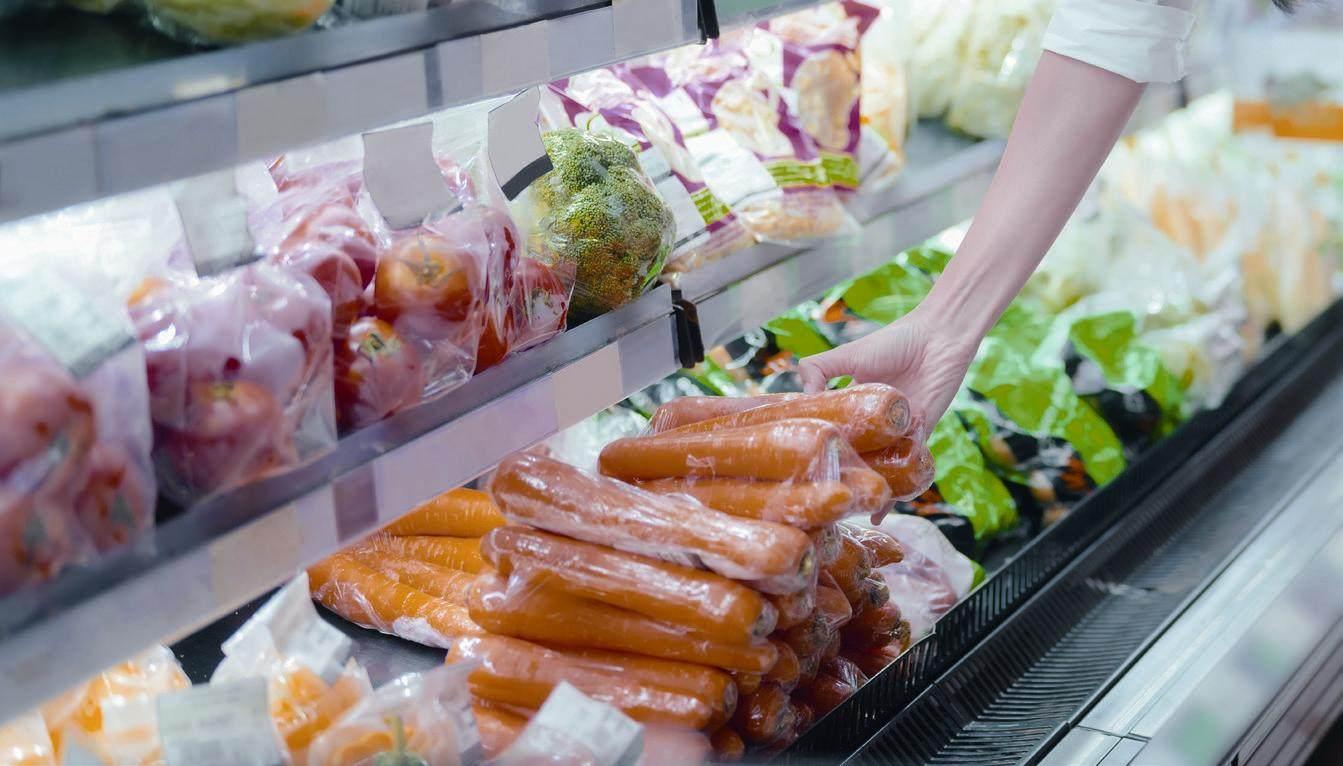Preparing Dishes into A New Favorite Under COVID-19
By Jenny Hu
Influenced by factors such as the lazy economy and pandemic prevention and control, in the highly competitive catering industry, prepared dishes have become a new favorite “dark horse”.
The turnover of prepared dishes increased significantly
Previously, this concept (prepared dishes) received a tepid reception, and didnt explode until recent years. This explosion in popularity was evident especially in 2021, due to the effects of the pandemic. In the case of the suspension of dining in the restaurants and venues, apart from the delivery of take-out, selling prepared dishes in front of large supermarkets became a big “magic weapon” for offline restaurants to improve their performance. At the same time, the online sales of prepared dishes have also become popular.
According to data regarding Meituan grocery shopping, the sales of prepared dishes increased rapidly in 2021, at a rate four times higher than that of 2020, among which the sales of frozen dishes accounted for the highest proportion and the largest growth rate. According to data from JD.COM supermarket, the turnover of prepared dishes increased by 156% in 2021. During the “May Day” period in 2022, the growth rate of the turnover of prepared dishes further accelerated, with a year-on-year increase of over 250%, and a daily delivery volume exceeding one million.
According to QCCs data, there are 66,700 enterprises related to prepared dishes in China. In the past 10 years, the number of registered enterprises related to prepared dishes in China has been on the rise. In 2019, there were 12,800 new ones, a yearon-year increase of 27.46%. In 2020, this increased by 12,900, up by 0.63% year-on-year. In 2021, it increased by 4,200, a year-on-year decrease of 67.32%. From the perspective of regional distribution, Shandong ranks first with 0.82 million enterprises related to prepared dishes. Henan and Jiangsu have 6,300 and 5,600 respectively, taking the other spots in the top three. This is followed by Hebei, Guangdong, Anhui and other provinces. From the perspective of urban distribution, Shenzhen ranked first with 2019, followed by Changchun, Weifang, Linyi and other cities.
In recent years, in order to help the development of Chinas prepared dishes industry, the relevant state departments have issued a series of industrial support policies, covering food safety, nutritional structure, food processing technology and logistics data. In the “14th FiveYear Plan”, it has become clear that we should vigorously develop the green food industry. Indeed, the food manufacturing industry has accelerated to the level of trillions, and the prepared dishes industry has also been directly affected.
According to data from the National Bureau of Statistics, in 2021, the per capita disposable income of national residents was RMB 35,128, a nominal increase of 9.1% over the previous year, and an actual increase of 8.1% after deducting price factors. Against the backdrop of rising income levels, the per capita food consumption expenditure of Chinese residents is on the rise. At the same time, the diet structure has also changed, with the consumption and proportion of staple foods decreasing year by year, and the consumption of meat, eggs and vegetables increasing. This also means that the diet of Chinese residents is gradually upgrading, which lays the economic foundation for the consumption of prepared dishes.
The investment fever for prepared dishes provides support for the expansion of the industry. The first list of Weizhixiang that focused on prepared dishes in April 2021 further promoted the pursuit of the prepared dishes enterprises in the primary market. Fresh Hema, Ding Dong Grocery Shopping, Guo Quan and other enterprises have also dipped their toes into the prepared dishes arena. According to incomplete statistics, from 2021 to 2022, there were more than 20 financing incidents in Chinas prepared dishes industry, with the financing amount reaching tens of billions of yuan.
According to Chinas Prepared Dishes Market Prospect and Opportunity Report published by AskCI Consulting in 2021, the total scale of the prepared dishes market is R MB 204.4 billion-306.6 billion. According to the compound growth rate of 20% per year, Chinas prepared dishes market could grow into a trilliondollar market in the next 6-7 years. In the long run, the scale of the prepared dishes industry is expected to reach more than RMB 3 trillion.
Demand for prepared dishes in enterprises has increased
Recently, the Research Report on Industry of Prepared Dishes in 2022 shows that the chain-like trend of catering enterprises in China is becoming more and more obvious, and prepared dishes have the characteristics of standardization and unification, which can ensure the consistency of the taste of dishes in all chain stores to a certain extent. At present, Chinas head chain catering enterprises have a high utilization rate of prepared dishes, with 100% of Kungfu and Yoshinoyas products being pre-prepared, and with Xibei and Shanghai XNG Holdings Limited making up 85% of the raw materials. With the increasing chain rate of Chinas catering industry, B-end catering will continuously increase the demand for prepared dishes.
Chinas take-out penetration rate is constantly improving, which promotes the development of the prepared dishes industry, reaching 19.92% in 2021. The vigorous development of take-out also puts higher demands on the dining speed of catering enterprises. Prepared dishes can save on meal times and improve the delivery efficiency. Driven by the fast pace of take-out, the demand for prepared dishes by catering enterprises is increasing.
At the same time, in recent years, “food for one person” has gradually become a hot search word. The increasing work pressure faced by most young people, meaning less time and energy to cook, coupled with the impact of the pandemic, has led to a sharp increase in the frequency of cooking at home, and the rise of various retail channels such as supermarkets, convenience stores and fresh e-commerce. The characteristics of prepared dishes, such as a low time consumption, standardized taste, simple operation and easy finishing, have gradually captured the hearts of young consumers.
In addition, compared with traditional cooking bags, prepared dishes have a shorter shelf life and higher requirements for freshness, so they need to be stored and distributed in the cold chain. At the same time, because the downstream customers are scattered and the product demand is diverse, advanced warehousing and logistics systems and cold chain transportation technology are needed to meet the demand for highfrequency distribution. In recent years, Chinas cold chain logistics industry has grown rapidly. The cost of setting up its own cold chain transport fleet and purchasing information logistics systems has decreased, and the cold chain logistics facilities have gradually improved, providing a solid foundation for the supply and distribution of prepared dishes.
With the superposition of economic development, consumption upgrading, the increasing rhythm of life, the rise of take-out group meals, the development of cold chain transportation and other factors, Chinas prepared dishes industry has come to the forefront, and the market is rapidly expanding. According to NCBD data, the scale of Chinas prepared dishes market in 2021 exceeded RMB 300 billion, with an average annual compound growth rate of 28.8% in 2017-2020. It is estimated that it will further reach RMB 415.15 billion in 2022, with a year-on-year increase of 32.4%, and will exceed RMB 830 billion in 2025, within which the proportion of the C-end market will be close to 30%.
Restrictive factors affect the national development of prepared dishes
Investigation shows that this industry is greatly affected by fluctuations in raw material prices. 90% of the cost of prepared dishes products comes from raw materials, and the prices of raw materials are affected by the international market and natural environment, and there are periodic changes in these areas within the year. However, prepared dishes products cant have periodic changes that take into account factors such as the prices of meat, grain, etc., so it is inevitable that prepared dishes enterprises will be affected by the fluctuations in raw material prices.
Although Chinas cold chain warehousing logistics has maintained a high growth over the past few years, the infrastructure of cold chain logistics is still weak, which limits the distribution radius of prepared dishes products. At present, Chinas prepared dishes enterprises exhibit regional characteristics, which directly corresponds to the regional concentration of cold chain enterprises.
According to the Report of Prepared Dishes Consumption(hereinafter the Report) released by Jiangsu Consumer Rights Protection Committee, consumers have three main concerns about prepared dishes: food safety; food taste; and variety.
It is difficult to prepare certain dishes and to create popular products. On the one hand, there are great differences in eating habits and tastes in different parts of China, which makes it more difficult to make popular products, and also limits the national development of prepared dishes enterprises. On the other hand, Chinese cooking requires high flavor, and freshness of ingredients and the cooking process, and many complicated and personalized dishes cant be industrialized, especially those with a light flavor.
In order to better promote and standardize the development of the prepared dishes industry, relevant policies have been intensively introduced since 2022. In January 2022, the National Development and Reform Commission issued the Notice on Promoting Consumption in the Near Future, which mentioned that the manufacturing and sale of semifinished products and clean vegetables are being encouraged. For example, Guangdong, Fujian, Shandong and other places have successively introduced development policies for the prepared dishes industry to support the development of the local prepared dishes industry. Recently, the China Cuisine Association also officially issued group standards for prepared dishes, which clearly defined the raw materials, product standards, hygiene during the production process, labeling, packaging and storage requirements of prepared dishes.
IiMedia Research pointed out that the key words for the future trends in the prepared dishes industry are “green food” and “digital cold chain”, and the market scale will develop towards the trillion-dollar market. Judging from the current participants in the prepared dishes industry, enterprises that are good at supply chain integration, popular product creation or channel control are all expected to form a large-scale prepared dishes business, and whoever masters these is expected to become the industry leader.
The Report pointed out that it is an inevitable trend for prepared dishes enterprises to closely follow market dynamics, hone in on consumerstastes and preferences, and develop and launch products that meet consumersneeds in time, all when faced with the escalating demand of consumers moving from “edible” to “delicious and cost-effective” to “delicious + cost effective + better experience”. In addition, faced with the impact of the fluctuation in raw materials in the upstream of prepared dishes, enterprises should pay attention to improving storage technology and transportation efficiency, increasing stocks of meat and aquatic products, and ensuring the digitalization of cold chain logistics, which is an inevitable means for ensuring food safety during transportation.
- China’s foreign Trade的其它文章
- Zero Tolerance for Bad Faith Trademarks By Chinese Authorities
- Focus on Seven Aspects of the Amendments to the Anti-Monopoly Law
- Off-shore Duty-free Consumption in Hainan Surges
- New Infrastructure Construction Promotes the Stable Growth of the Chinese Economy
- China’s Automobile Exports Catch Up from Behind
- The Logistics Industry Turns Positive

